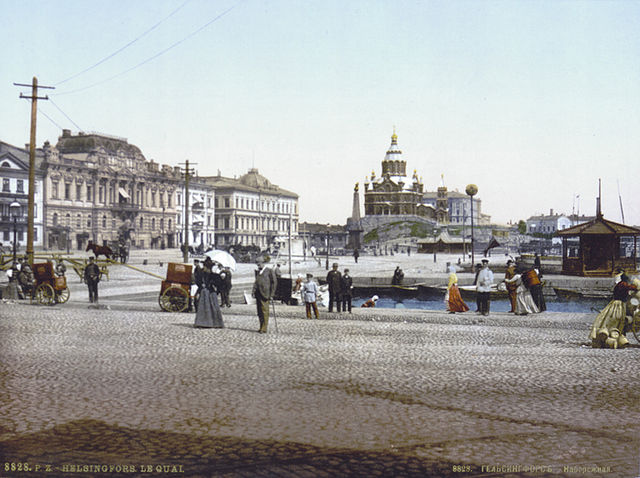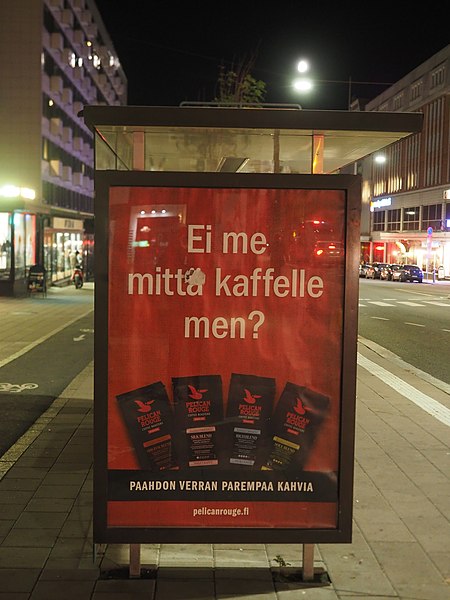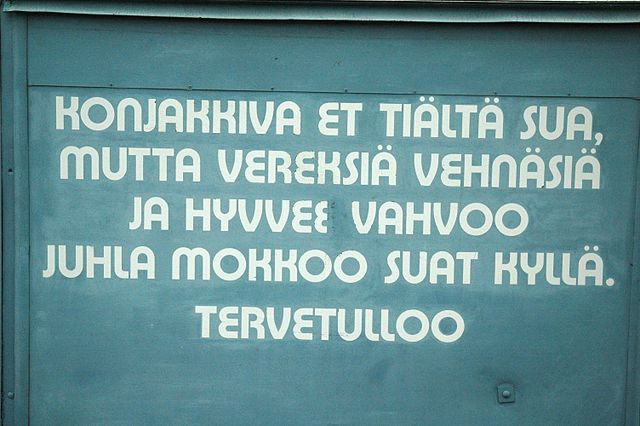Helsinki slang or stadin slangi is a local dialect and a sociolect of the Finnish language mainly used in the capital city of Helsinki. It is characterized by its abundance of foreign loan words not found in the other Finnish dialects.
Hämeentie, the second longest street in Helsinki, was under construction in 2019-2020. The yellow-blue sign, humorously written in Helsinki slang, says: "Cars are gone, soon we walk and cycle. A better Hämeentie is on the way."
Helsinki in 1890s
Vallila district still boasts wooden houses from the 1910s
Finnish is a Uralic language of the Finnic branch, spoken by the majority of the population in Finland and by ethnic Finns outside of Finland. Finnish is one of the two official languages of Finland. In Sweden, both Finnish and Meänkieli are official minority languages. The Kven language, which like Meänkieli is mutually intelligible with Finnish, is spoken in the Norwegian counties Troms and Finnmark by a minority group of Finnish descent.
Mikael Agricola, a 19th-century drawing by Albert Edelfelt
Elias Lönnrot as depicted in a 19th-century caricature – Lönnrot made several journeys to Karelia and Eastern Finland to collect folklore, from which he compiled the Kalevala.
The Turku dialect is famous for its seemingly inverted questions. For example, "Ei me mittä kaffelle men?" looks like it means "So we don't go for a coffee?" but actually means "Shall we go for a coffee?"
A sign in Savonian dialect: "You don't get cognac here, but fresh wheat buns and good strong Juhla Mokka-brand coffee you will have. Welcome."







